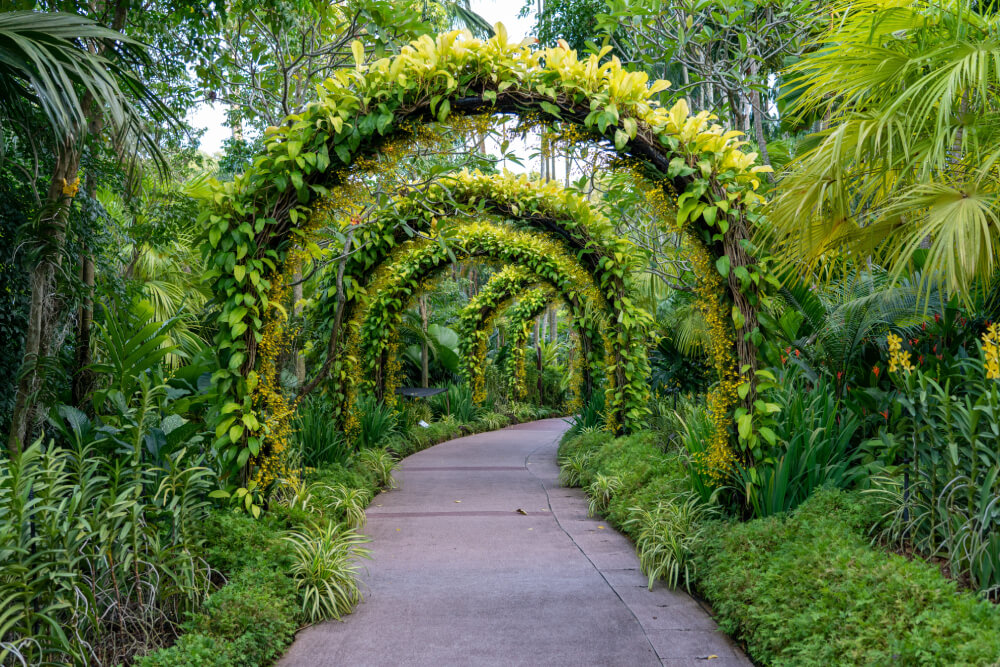Crafting the Perfect Garden: A guide to Thoughtful Garden Design

It takes more than just planting flowers or bushes to create a garden; it takes designing an area that fits your lifestyle, expresses your individuality, and highlights the inherent beauty of your house. A thoughtfully planned garden can serve as a wildlife refuge, a place for family get-togethers, or a place where you can relax. Efficient garden design is essential to attaining harmony, practicality, and aesthetic appeal, regardless of the size of your garden—whether it’s a modest urban backyard or an expansive landscape.
Understanding Your Space
Take some time to comprehend your garden area before starting the design approach. Examine its dimensions, form, and characteristics, including the sunshine direction, soil composition, and any existent buildings, fences, or trees. You can make sure that your garden flourishes in its surroundings by using this knowledge to help you choose plants and materials. Think of how you’ll utilize the area as well, such as for hosting visitors, cultivating your own food, or just using it as a tranquil refuge. Your landscape design will start with an understanding of these components.
Choosing a Theme
After evaluating your area, it’s time to decide on a garden theme or aesthetic. When you picture an English garden, do you see well-groomed hedges and colorful flower beds? Or how about a sleek, water-feature-filled, minimalist Japanese garden? Perhaps you would like a cottage-style, rustic garden bursting with paths and wildflowers. Making a theme pick will assist direct all of your design decisions, including plant selection, arrangement, and décor.
Planning Your Layout
Designing a garden’s layout is essential since it dictates how the area will move and work. Make a rough design of your garden at first, taking into account any features and buildings that are already there. Next, choose your garden’s main sections, including any seating areas, vegetable patches, flower beds, or water features. Pathways that naturally direct guests through the area should be included in the layout, which should also be aesthetically pleasing and useful.
You may attract attention and add structure to your garden by erecting focus points like a sculpture, a sizable plant, or a seating area. Straight lines convey a more formal and contemporary atmosphere, but curved routes can evoke a sense of mystery and movement. In addition to meeting your garden’s functional needs, your layout should tie in with your concept.
Selecting Plants and Materials
Making your garden come to life depends on your choice of plants. Consider your garden’s climate, soil composition, and amount of sunlight. Since they require less care and are more likely to flourish, native plants are frequently a wise choice. To provide layers of interest and texture throughout the seasons, think about combining a variety of trees, shrubs, flowers, and ground cover.
Materials like metal, wood, paving stones, and gravel can also offer structure and texture to your design in addition to plants. Choose materials that complement the theme of your garden; for example, sleek concrete may fit a modern, minimalist area, while natural stone works well in cottage or Mediterranean gardens. Planters, containers, and garden accents can all improve the overall scheme.
Incorporating Water and Lighting
Small ponds or fountains are examples of water elements that give a landscape peace and a calming atmosphere. The sound of flowing water can filter out street noise and foster a tranquil mood. Wildlife may be drawn into your area by the simple yet effective addition of a tiny birdbath.
In a similar vein, having garden lighting is crucial to using your garden later in the day. To draw attention to walkways, focal places, and seating spaces, use warm, gentle lighting. Strategically placed lights can lend a wonderful touch to your landscape at night. Solar-powered lights are an environmentally friendly alternative.
Conclusion: A Garden That Grows With You
The process of creating a landscape design is dynamic. Plants alter, bloom, and grow throughout time, adding a dynamic element to your garden. Keep an open mind about making changes to your design as it develops and as you use the area. A thoughtfully designed garden will add years of visual value to your house while serving as a happy and tranquil haven for years to come.
Careful garden design is essential to producing an outside space that is both beautiful and useful, whether you’re new to gardening or renovating an existing area. So gather your gardening supplies, get to work on your design, and watch your vision come to life.
